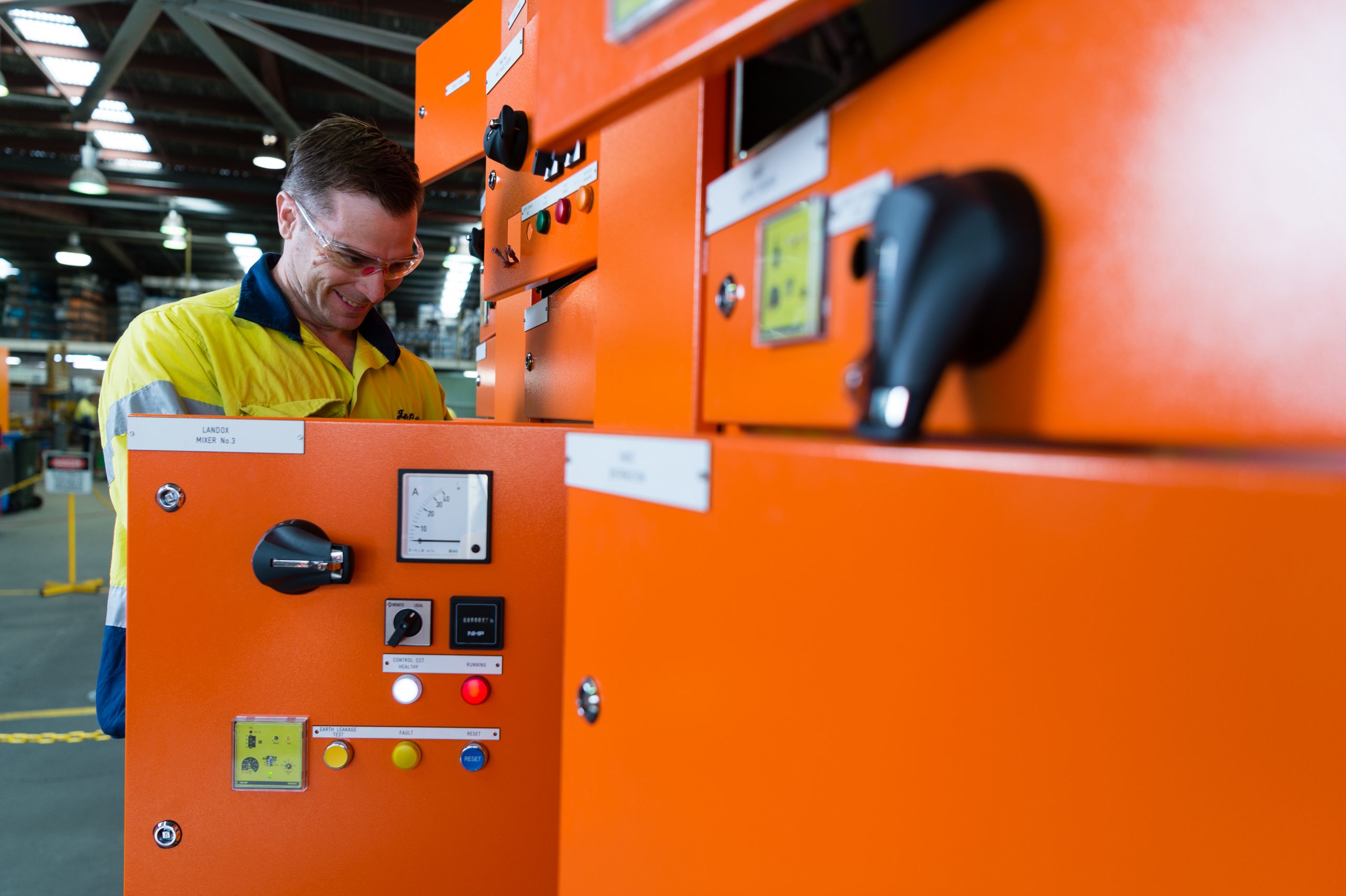What IP rating should I specify my switchboard?

There are two things to consider when specifying the IP rating of your switchboard
- A higher IP rating may cause issues with condensation build up within the switchboard
Condensation can build up where there are conditions of high humidity, or large internal/external differential temperatures (as is the case of outdoor locations). This has the potential to cause corrosion of internal components, or worse, short circuiting causing catastrophic failure.
This can be negated with the use of anti-condensation heaters, pressure compensation plugs, louvres or vents.
- There is generally a trade-off between higher current ratings and ingress protection
Current flowing through switchgear equipment and interconnecting bus systems generates heat. Oversizing the switchgear and bus systems (derating) can overcome this temperature rise issue but there is practically (and commercially) only so much space for oversized switchgear, or the amount of copper in a bus system that can be put inside the switchboard. In these cases, cooling becomes necessary for these higher current switchboards. Arc fault containment then complicates this as a viable solution. (more about arc fault containment in a future post).
Derating of switchboard equipment’s current carrying capacity is commonly known in the board building community. For example, in a totally enclosed compartment (without ventilation) containing a 4000A Air Circuit Breaker, the ACB terminals can exceed the ACB’s maximum operating temperature limit, thereby requiring a derating of the current carrying capacity to as low as 2500A to meet the specified temperature limits of the switchgear.
By simply providing a ventilation path in the above example, the current rating of the ACB could be increased to nearly 3000A. No matter what can be practically undertaken in the way of ventilation, the manufacture’s switchgear rating will always be derated by a certain amount when you place the switchgear in any enclosure.
The designer will need to consider maximum allowable temperature rise of the equipment within the enclosure from the ambient conditions, and the power loss (or heat dissipation) from that equipment.
AS/NZS 61439 clause 10.10.4.2 allows temperature rise “verification by calculation” for a single compartment of 630A or less.
AS/NZS 61439 clause 10.10.4.3 allows temperature rise “verification by calculation” for a single or assembly of compartments totalling less than 1600A.
For a single or assembly of compartments totalling 1600A or greater, AS/NZS 61439 requires “verification by test” or engineering “derivation from a tested design of ratings for similar variance”.
JPR have undergone several tests for and have verified switchboard designs from IP40 through to IP56.
Outdoor switchboards
By default, JPR’s outdoor “VERICON” switchboards are built to IP56. These are fully welded and constructed from stainless steel or aluminium. JPR’s propriety IP56 vent and filter systems are covered by cowls providing enhanced protection from water but without reducing the cross-sectional area of the ventilation system’s inlet/outlet cross sectional area.
IP56 means the enclosure is dust resistant (with no harmful build-ups) and protected from powerful water jets in ALL directions.
As you can see from this video IPX6 is an onerous test requiring a jet of water from a nozzle 12.5mm in diameter, a flow rate of 100 litres / minute from all directions 2.5m – 3.0m away from the enclosure (Refer AS 60529, section 14.2.6).
Indoor switchboards
JPR standard “DEMCON MKIII” modular, high current, switchboards are built for indoor environments and are constructed using modular assemblies using powdercoated and passivated zinc anneal steel parts assembled together, which means the switchboard can be easily modified to meet future needs. These standard switchboards can constructed for up to IP44, but with enhancements can be provided with IP56 protection.
AS3000 section 2.10.2.5 states that switchboards installed in an area with an automatic sprinkler system for fire suppression shall be IPX4 (unless a shield is applied). An IPX4 test is equivalent to giving your switchboard a shower, from a spray nozzle containing 121 x 0.5mm holes and a constant flowrate of 10 litres / minute from all directions 300mm – 500mm away from the enclosure (Refer AS 60529 Section 14.2.4).
When selecting the IP rating, the designer needs to weigh up what the purpose of the switchboard is, the current rating, internal temperature rise, and whether the switchboard will need to be modified in future. Whatever your needs, JPR can assist you with a switchboard solution.
